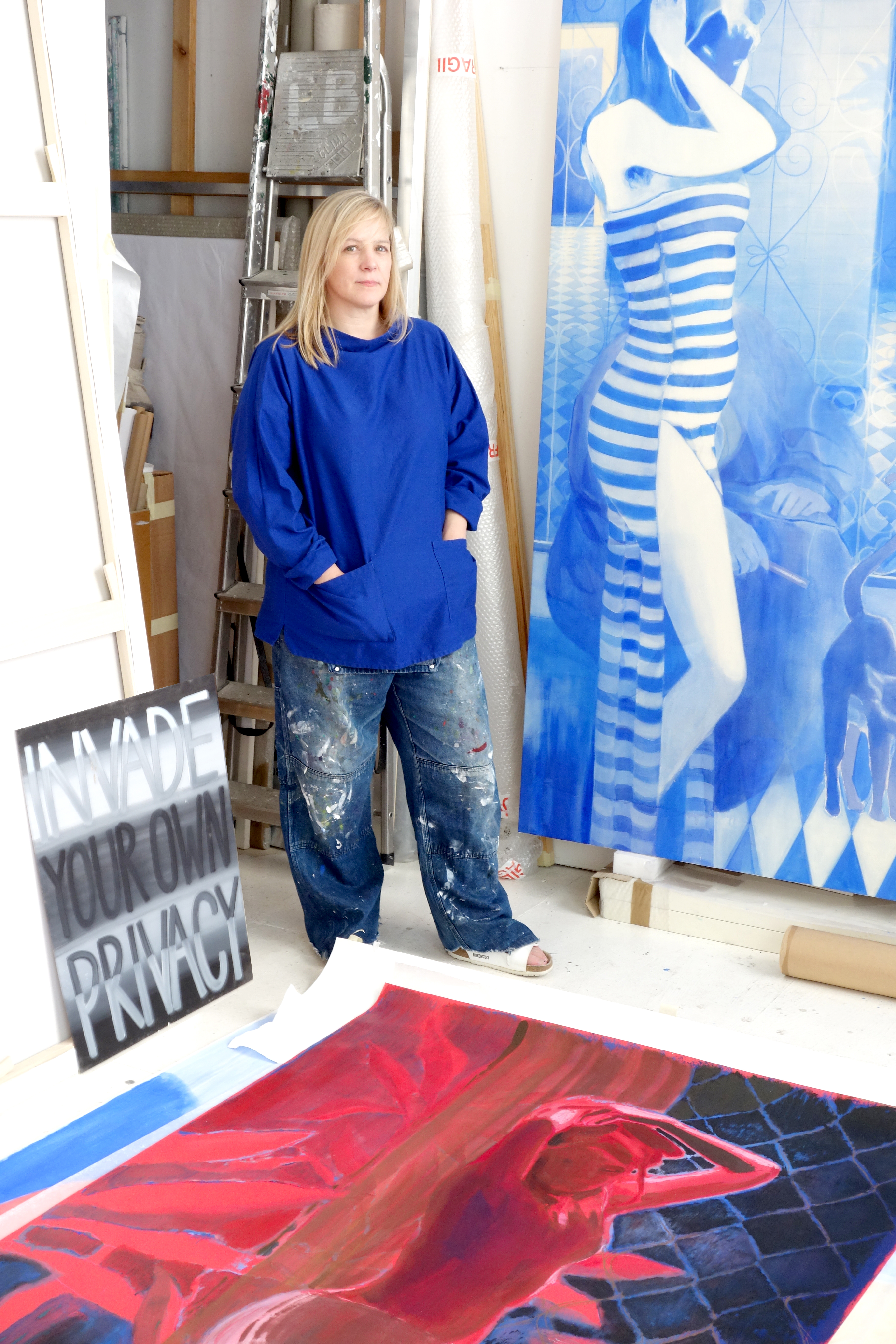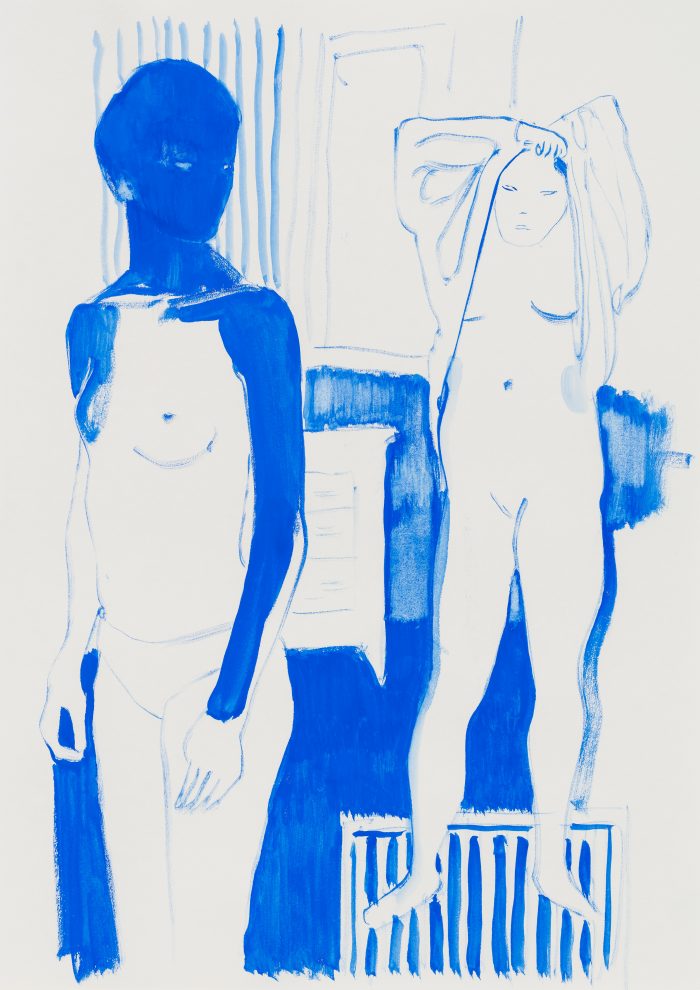
The South African artist Lisa Brice paints women in imagined places. These places might be in Cape Town—where she grew up and established a reputation as a rising star of South African art before leaving for London in 1999—or Trinidad, where she has become part of a community of artists (her friends Chris Ofili and Peter Doig, among them) who have taken a shine to the light and lifestyle of the Caribbean island.
In Brice’s recent portraits, the women are often semi-nude, or in the process of getting that way, dressing or undressing and often looking at themselves in a mirror. They may be found smoking, dancing or drinking—or all of those things at the same time. All are in a Klein-ish cobalt blue (Brice says it’s more like the color of the blue devil characters that appear during Trinidad’s carnival, and the blue of twilight, a “transitional, liminal time of day”). Brice’s line is more than assured and her women are sexy but not sexualized, sometimes awkward, sometimes self-aware but never really there for you.
Sometimes she pulls in the women who have populated the canvases of other artists, and they too become blue and part of her imagined places. Brice’s profile in the UK has been on the rise over the last two years. In 2016, the Nigerian-born, London-based fashion designer Duro Olowu (whose wife is Studio Museum of Harlem Director Thelma Golden) showed one of her works as part of the acclaimed “Making and Unmaking” show that he curated at London’s Camden Arts Centre.

“Great artists are quiet masters of composition and technique,” says Olowu. “Lisa is such an artist, without the ego. She brings humanity, warmth and surreal sensuality to her paintings with the skills and savvy of an artist way beyond her years.” Olowu is now a collector of Brice’s work. “Once the show was over I got two “Blue works” on paper which bring me much joy. I love studies but these are just as powerful and moving as her large paintings.” Earlier this year, to rave reviews, Brice exhibited 54 of these small gouache studies at a solo show at London’s Stephen Friedman gallery. And this fall, Brice will bring large canvases, large oil on paper works and small gouaches to the Bowery branch of Jeanne Greenberg Rohatyn’s Salon 94, her inaugural show at the gallery.
On a steamy early summer’s day in her London studio, Brice is at work on two large paintings for Salon 94. On the canvases, there are groups of women, most of whom first appeared solo in Brice’s studies. In one, the young girl first seen smoking in a cafe in Manet’s Plum reappears. In Brice’s painting she is still smoking, but she wears more contemporary dress and has a bottle of beer. Just behind her, another woman cradles her (own) naked behind. In another large work she appropriates the black woman in Félix Vallotton’s La Blanche et la Noire, who pops up in a sailor’s cap. Picasso’s Gertrude Stein is also in the work. “She dominated the painting,” Brice says, “but there is a shadow of her puffing away in the corner. I wanted to include these two matriarchal figures from the history of art.” Parts of Picasso’s Les Demoiselles d’Avignon were also in there but now only the fruit remains, as a tattoo on the arm of the relocated lady of Vallotton.
The paintings seem utterly contemporary but summon up the long history of the female nude in painting. Brice, though, puts them in a very different place and points them in a different direction.










 in your life?
in your life?

